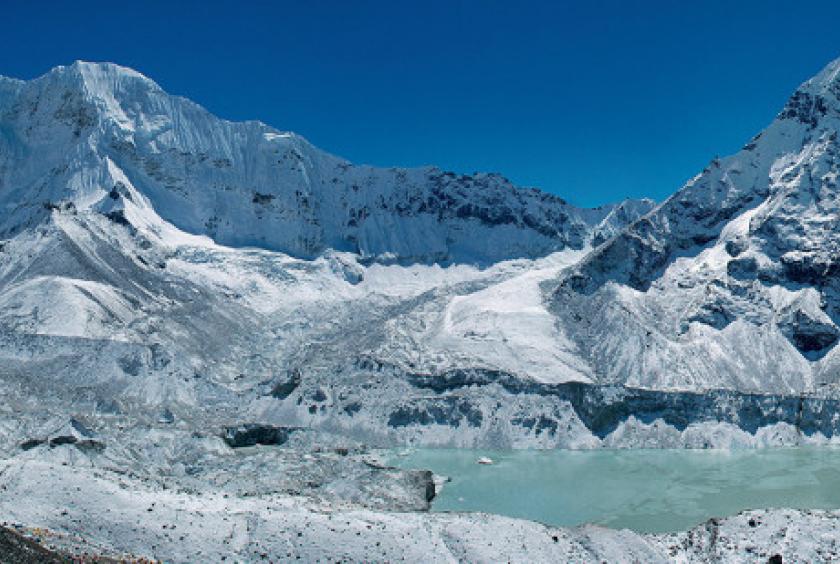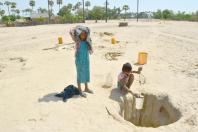
by Chandan Kumar Mandal
KATHMANDU (The Kathmandu Post/ANN) - The adverse effects of climate change are already visible in various sectors across the country, scientists say.
In the summer of 2016, Tuta absoluta—a devastating tomato pest—was reported for the first time in the country. As it attacked tomato, one of the major cash crops for the country, invasion of the pest left farmers, government and non-government agencies worried. It was estimated that Tuta absoluta would cause tomato yield losses in Nepal up to 80 to 100 percent.
Climate change experts and scientists gathered in Kathmandu say that climate change will have severe impacts on agriculture and biodiversity sectors with the changes in temperature, rainfall patterns, new diseases and pests like Tuta absoluta.
“Climate change will have more impacts on agro-biodiversity. Agriculture will be highly affected. Climate change and heat stress are already killing bee population and equally affecting other animals,” said Arun Prakash Bhatta, an undersecretary at the Climate Change Management Division under the Ministry of Forest and Environment. “There will be new diseases and pests emerging. Tuta absoluta, which was first identified in Kathmandu and surrounding districts like Bhaktapur and Kavre, has spread across the country now.”
Nepal has been termed the fourth most vulnerable country in the world in terms of climate change effects. The adverse effects of climate change are already visible in various sectors across the country.
As a mountainous country lying in the Hindu Kush Himalayan region, a zone highly vulnerable to climate change, Nepal is likely to witness a harsh future receiving effects on health, agriculture and livelihood, among other sectors.
Impacts of climate change in the form of increased extreme weather events, spiked temperature, altered rainfall pattern, drop in crop production, and growth of invasive alien plants are felt in the country, according to climate scientists gathered at a tw0-day event in Kathmandu.
“Mountains are more vulnerable to climate change than any other ecosystems. The magnitude of the warming increases with altitude. Mountains are warming faster than plains thus our lives and livelihood are directly under a hanging sword,” said Tirtha Bahadur Shrestha, a botanist and conservationist.
According to Shrestha, some 30 years ago, the country had vast grazing areas above the treeline—the line or altitude above which no trees grow—which has shrunk due to the invasion of shrubby plants. The phenomenon can be linked to climate change.
“There is a whole new challenge for conservation biologists to monitor these changes. Mosquitos are already climbing upwards and have reached as high as Humla and Jumla,” said Shrestha. “We may expect the treeline to move higher and higher, reaching closer to high mountains or areas where snowfall begins.”
According to the government report, Nepal’s average annual maximum temperature has gone up by 0.056 degrees Celsius every year, signs that the country’s climate has been warming up.
The latest landmark study in the Hindu Kush Himalaya region, which covers 3,500 kilometres across Afghanistan, Bangladesh, Bhutan, China, India, Myanmar, Nepal and Pakistan, has projected an alarming future for countries like Nepal.
The region is known for drinking water and fresh air, among other environmental services, to the region’s 240 million population and serving a total of 1.65 billion people dependent upon 10 major rivers that originate in the Hindu Kush Himalaya region.
The study concluded that even the most ambitious Paris Agreement goal—of limiting global warming to 1.5 degrees Celsius—by the end of the century would lead to an increase of 2.1 degrees and the melting of one-third of the region’s glaciers.
“The region including Nepal will warm up even if the world stabilises by 1.5 degrees Celsius,” said Arun Bhakta Shrestha, senior climate change specialist at the International Centre for Integrated Mountain Development. “Most of the people live downstream, but whatever happens in the upper mountains spills down and affects people living in the plains.”
According to Shrestha, climate change has thrown up lots of challenges for the region which can only be dealt with by minimising the risk.
“There is a huge knowledge gap. We need more knowledge and understanding of climate change. However, the current level of understanding also allows us to respond and work positively towards climate change,” said Shrestha.















